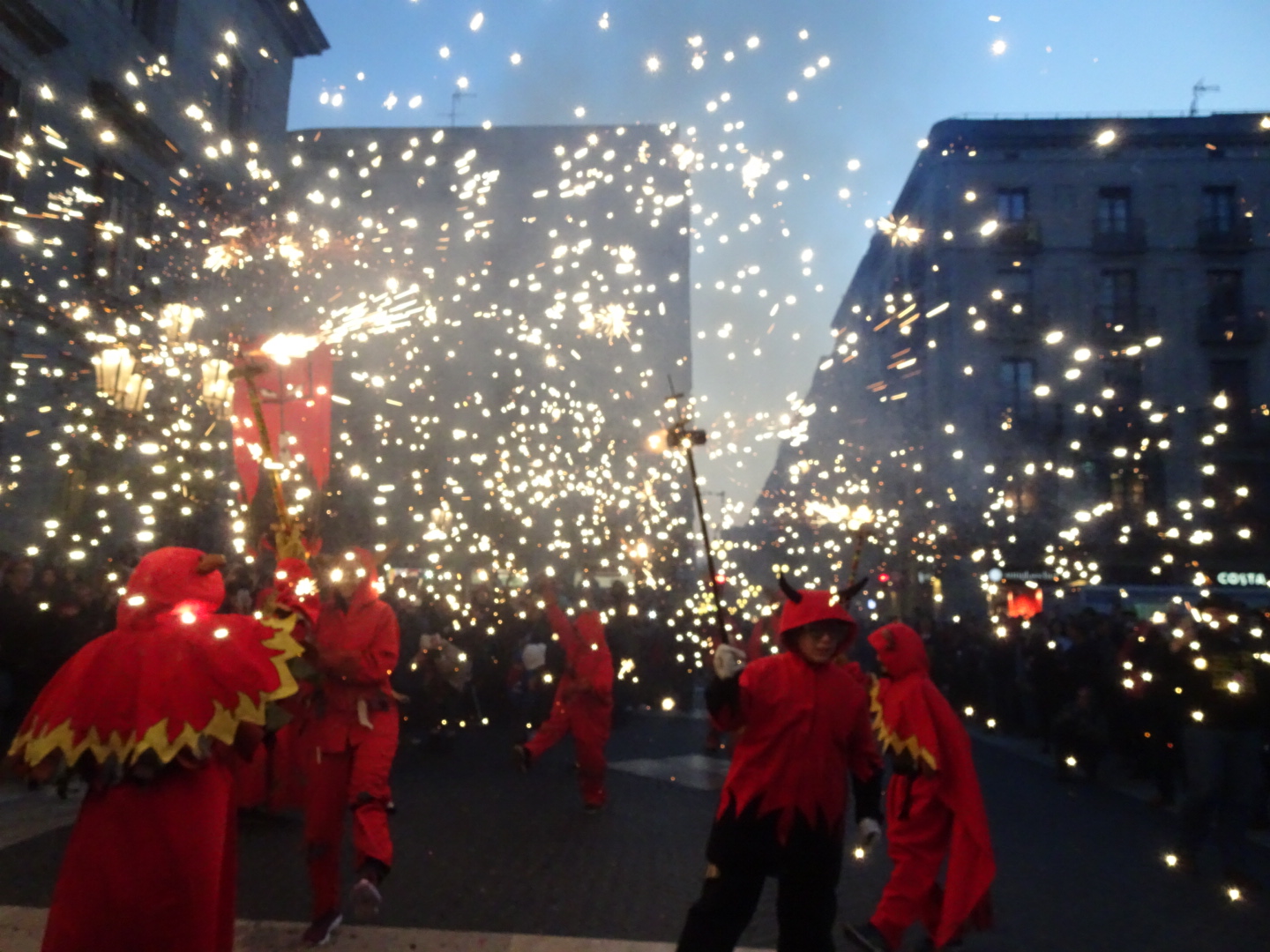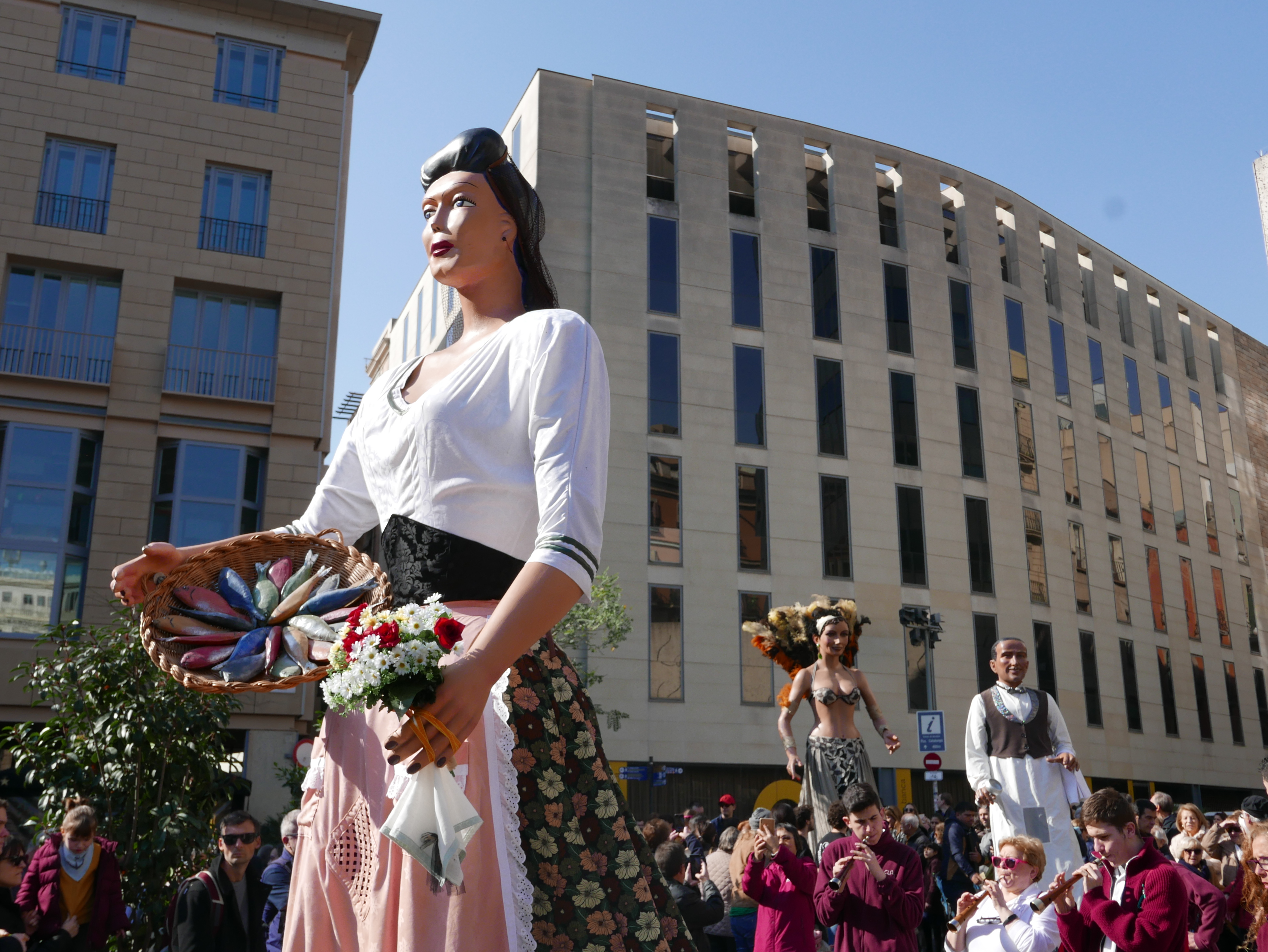Are you on a family vacation in Barcelona? The city is home to La Festa Major, the best festivals of the year. If you have the opportunity to travel to Barcelona at the end of September, you will enjoy the city’s best festival, La Mercé. But if you and your kids come to visit during February, you’ll find yourself enjoying the city’s best festival of the winter, the Festival of Saint Eulália.
But, what is the Festa Major? What do we celebrate?
Here, we’ll give you the best advice for getting the most out of these festivals and to better understand their traditions.
What is the Festa Major?
It is the celebration of the patron saint of the city. The origin is religious. Today, they have become popular festivals, a mix of tradition, music and art.
The Traditions of the Festa Major
To best take advantage of your visit with your family during these popular celebrations, we’ll explain the meaning behind some of the traditions.
Castells and Castellers
Famous catalan tradition that has gained international notoriety over the past few years. The Castells, literally translated to “castles” are human towers. This tradition goes back to the end of the 18th century in the city of Valls in the province of Tarragona. The castells are divided into three parts:
- First, “la pinya,” which is the base. Its objective is to stabilize and support the rest of the structure.
- The “tronc” is made up of all of the levels of the tower above the pinya, from one to nine.
- Finally, the “pom de dalt” is the highest part of the tower and is made by children, the smallest and most limber of the group.
The people who participate in the castells are called the castelleres.
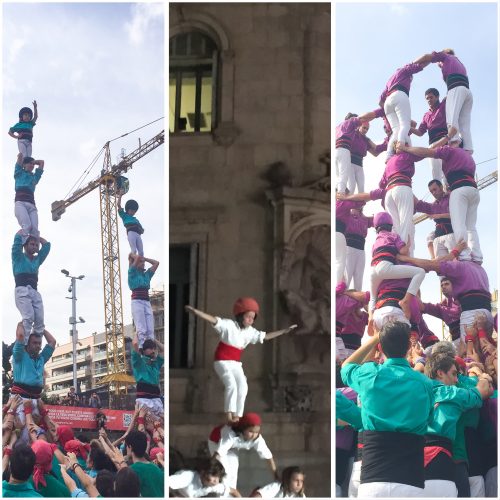 Accompanying du the construction of the castells are the grallers. They are musicians that play the gralla, a wind instrument typical in Catalan culture.
Accompanying du the construction of the castells are the grallers. They are musicians that play the gralla, a wind instrument typical in Catalan culture.
If you want to learn more about the castells, take a look at our article.
The correfoc
The correfoc tradition is a fire run that parades through the streets with an interesting twist: the participants are dressed as demons and they throw fire. We can see how the kid’s interest in attending a correfoc is dividen. There are those who enjoy watching the spectacle, although there are those that get a little frightened.
 The participants of the correfoc are dressed as demons. They are used to being accompanied by dragons and fire beasts. The tradition goes back to the Middle Ages. It is a rowdy tradition that is also very popular. There are, of course, basic rules of security. There should always be an adult accompanying a child, families should maintain a distance from the fire and should not wear clothing made of synthetic materials.
The participants of the correfoc are dressed as demons. They are used to being accompanied by dragons and fire beasts. The tradition goes back to the Middle Ages. It is a rowdy tradition that is also very popular. There are, of course, basic rules of security. There should always be an adult accompanying a child, families should maintain a distance from the fire and should not wear clothing made of synthetic materials.
The Trabucaires
The trabucaires were catalan bandits in the 19th century. The used the “trabuc” as a fire gun with a wide, bell-shaped mouth. Today, it is often a part of the Festes Majors. They are used to announce the start of the festival, with participants shooting the trabuc into the sky. During this tradition, we recommend that you cover their ears if your child is sensitive to noise.
The Bastoners
They are dancers that use “bastons”, or bars of wood to choreograph battles. The exact origin is unknown, but the mostly likely is that it is a version of a saber dance.
Gegants, capgrossos and nans
They are the biggest stars of the younger audience of the fiesta mayor. Gegants translates to giants. The capgrossos are the big heads and the nans are the dwarfs. They have been part of the Catalan traditions since the 14th century. They march in parades and do dances at each Festa Major and important meetings. Each city, each district, even each big group or association, such as a school, for example, has its own giants. They work in pairs and are a representation of kings, nobles or famous characters. They are accompanied by the capgrossos and the nans during the parades. This tradition is one that you shouldn’t miss and that your kids would love to see.
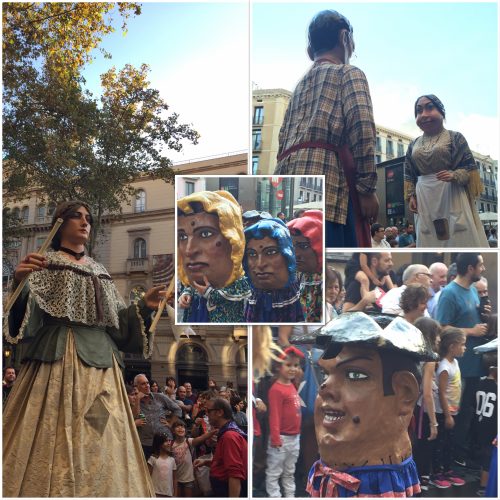 Bestiary of Barcelona
Bestiary of Barcelona
The bestiary of Barcelona is made up of the eagle, the lion, the mule and the donkey.
In popular parades, the giants are usually accompanied by the animals. In Barcelona, it is l’áliga (the eagle), el lleó (the lion), el bou, (the ox), and la mulassa (the mule).
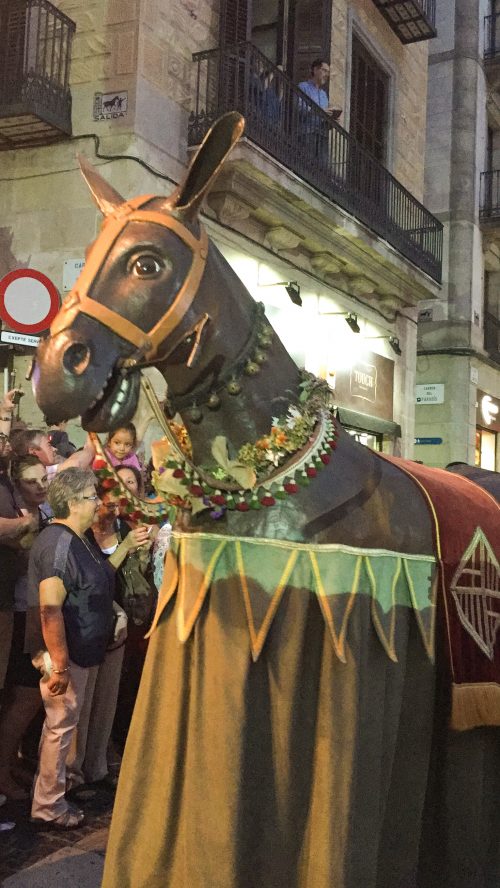 The mule is the unofficial symbol of Catalonia. It defines the character of a Catalan, a peaceful person, but with their own strength and will.
The mule is the unofficial symbol of Catalonia. It defines the character of a Catalan, a peaceful person, but with their own strength and will.
La Sardana
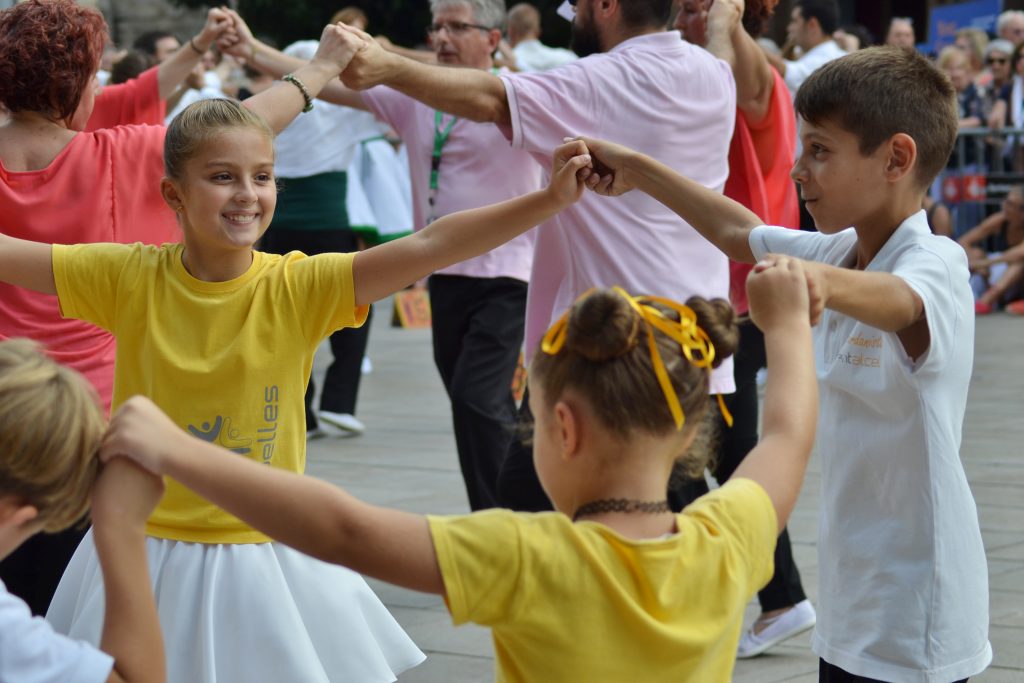 La sardana is a traditional dance, of slow and methodical rhythm. They dance in a circle and everyone participates. It is an intergenerational activity. As soon as music plays, the dancers put their bags, jackets and other personal items in the center and form a circle.
La sardana is a traditional dance, of slow and methodical rhythm. They dance in a circle and everyone participates. It is an intergenerational activity. As soon as music plays, the dancers put their bags, jackets and other personal items in the center and form a circle.
 The Main Festes Majors in Barcelona
The Main Festes Majors in Barcelona
Santa Eulália: from 7-12th of February, festival of the patroness of the city, it is the main winter festival in Barcelona
Find more information here.
The Festa Major de Gràcia: beginning the 15th of August, the streets in this authentic neighborhood are completely transformed.
Find more information here.
La Festa Major de Sants: It takes place just after Gràcia’s festival. In this fiesta mayor, the idea of decorating the streets is also at play, along with some other traditions. It is not a big, in the amount of streets that participate, but it is a must-see with kids.
Find more information here.
La Mercé: 24th of September, in honor of the patroness of Barcelona, the “Mare de Déu de la Mercé.”
Find more information here.
Sant Antoni
At the beginning of the year, Barcelona showcases the neighborhood of Sant Antoni. A highlight is the popular tradition of “Els Tres Tombs,” a parade of horses that your kids can’t miss.
We hope that with this advice you can live out the popular traditions of the Fiesta Mayor to the fullest. Above all, we wish you a wonderful stay in Barcelona with your kids.

